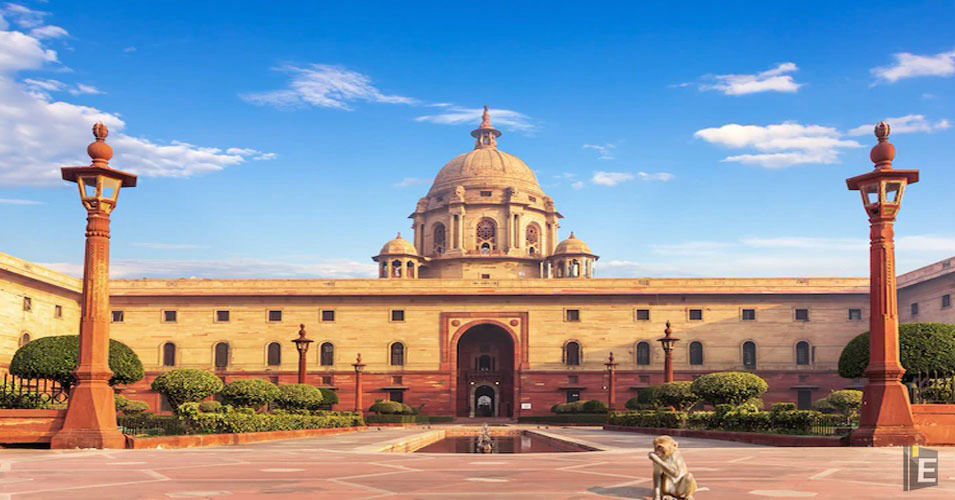Top 50 GK Questions and Answers

Constitution of India was adopt by constituent assembly on?
(A) 25 October, 1948
(B) 25 October, 1949
(C) 26 November, 1948
(D) 26 November, 1949
Correct Answer : D
The Constitution of India came into effect from?
(A) 15 January, 1950
(B) 26 January, 1950
(C) 15 August, 1950
(D) 15 January, 1950
Correct Answer : B
Explanation :
1. The Constituent Assembly passed the Constitution of India on November 26, 1949, but it came into force on January 26, 1950. India came into existence as a Republic on January 26, 1950.
2. The Constituent Assembly was established on December 9, 1946, to frame the Constitution of India. There were a total of 389 members in the Constituent Assembly, out of which 299 members were from the Indian National Congress. The Constituent Assembly drafted the Constitution in 2 years, 11 months and 18 days.
3. The Constitution of India is a written constitution. It is the longest-written constitution in the world. It consists of 395 articles, 8 schedules and 12 schedules. The Constitution sets out the structure, powers and functions of the Government of India. It also ensures the rights and freedoms of the citizens.
The President of India is elected by the
(A) Members of the Lok Sabha
(B) Members of Both houses of the parliament
(C) Members of the State Legislature
(D) Electoral college consisting of the elected members of Both Houses of the parliament and State Assemblies
Correct Answer : D
The Constitution of India came into effect, when?
(A) 15 January, 1950
(B) 26 January, 1950
(C) 15 August, 1950
(D) 15 January, 1950
Correct Answer : B
Explanation :
1. The Constituent Assembly passed the Constitution of India on November 26, 1949, but it came into force on January 26, 1950. India came into existence as a Republic on January 26, 1950.
2. The Constituent Assembly was established on December 9, 1946, to frame the Constitution of India. There were a total of 389 members in the Constituent Assembly, out of which 299 members were from the Indian National Congress. The Constituent Assembly drafted the Constitution in 2 years, 11 months and 18 days.
3. The Constitution of India is a written constitution. It is the longest-written constitution in the world. It consists of 395 articles, 8 schedules and 12 schedules. The Constitution sets out the structure, powers and functions of the Government of India. It also ensures the rights and freedoms of the citizens.
The Setting a Supreme Court was Calcutta is a part of ?
(A) Regulating Act of 1773
(B) Pitts India Act of 1784
(C) Charter Act of 1793
(D) Charter Act of 1893
Correct Answer : A
Explanation :
The correct answer is Regulating act of 1773. The Supreme Court at Calcutta was established by Regulating act of 1773.
Which Act is associated with "Courts can interpret the rules and regulations." ?
(A) Regulating Act of 1773
(B) Pitts India Act of 1784
(C) Charter Act of 1793
(D) Charter Act of 1893
Correct Answer : C
Explanation :
Charter act-1793 has give the full rights to the court to interpret the rules and regulations as and when required to it , so it means court take the help of this act to bring the new rules and regulations .
The Act enabled the Governor General to associate representatives of the Indian People with the work of legislation by nominating them to his expanded council ?
(A) Government of India Act, 1858
(B) Government Act of India Act, 1861
(C) Government of India Act, 1892
(D) Government of India Act, 1915
Correct Answer : B
Explanation :
The Government of India Act, 1861 was an act of the Parliament of the United Kingdom which consolidated the earlier acts relating to British India into a single Act.
The Act was passed to consolidate the provisions of the preceding Government of India Acts ?
(A) Government of India Act, 1858
(B) Government of India Act, 1861
(C) Government of India Act, 1892
(D) Government of India Act, 1915
Correct Answer : D
Explanation :
An act of the Parliament of the United Kingdom consolidated prior Acts of Parliament concerning British India into a single act. It was passed in July 1915 and went into effect on 1 January 1916. An Act to consolidate enactments relating to the Government of India.
Who acts as the channel of communication between the President and the council Minister?
(A) Chairman, Rajya Sabha
(B) Speaker of Lok Sabha
(C) Vice - President
(D) Prime Minister
Correct Answer : D
Explanation :
In parliamentary systems of government, the Prime Minister often serves as the key channel of communication between the head of state (such as the President or Monarch) and the council of ministers or cabinet. The Prime Minister is typically the leader of the executive branch and is responsible for coordinating government policies and decisions.
The term ‘cabinet' is mentioned in which of the following article of the constitution?
(A) Article - 74
(B) Article - 75
(C) Article - 352
(D) Not mentioned
Correct Answer : C
Explanation :
The word 'Cabinet' is mentioned only once in the Indian Constitution in Article 352(3) which states that "the President shall not issue a proclamation unless the Union Cabinet communicates him in writing that such a proclamation may be issued".



